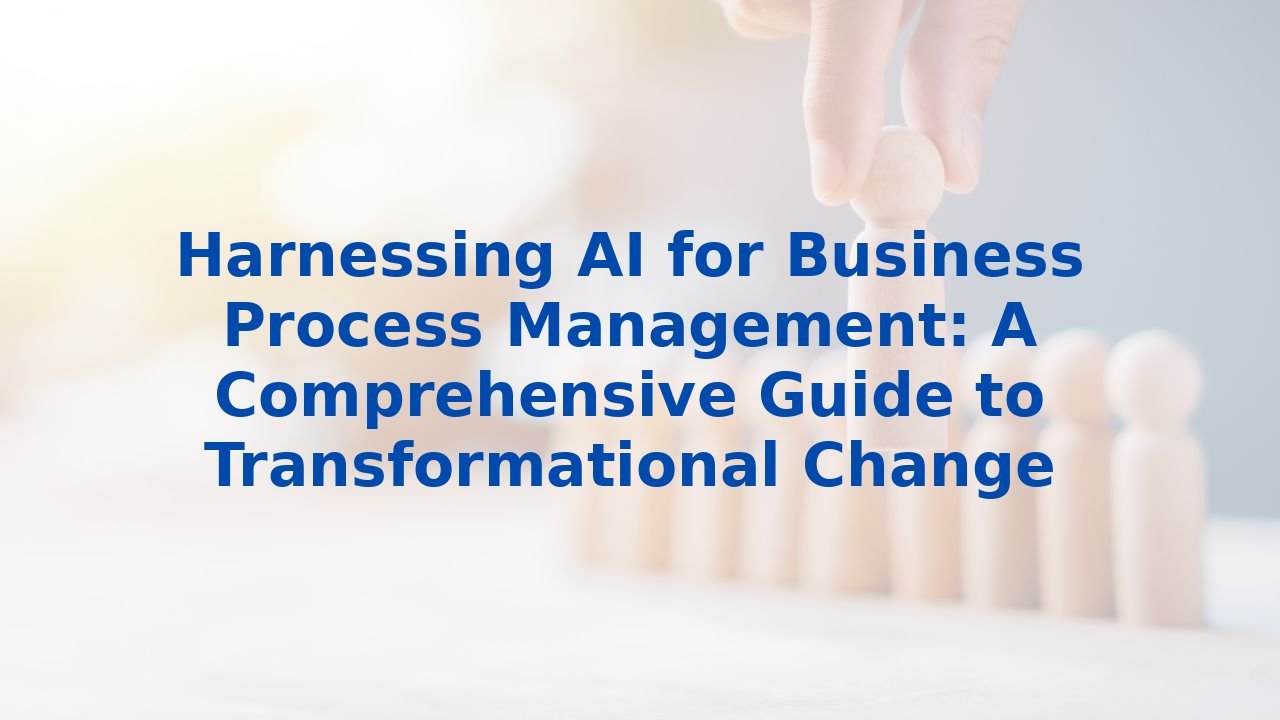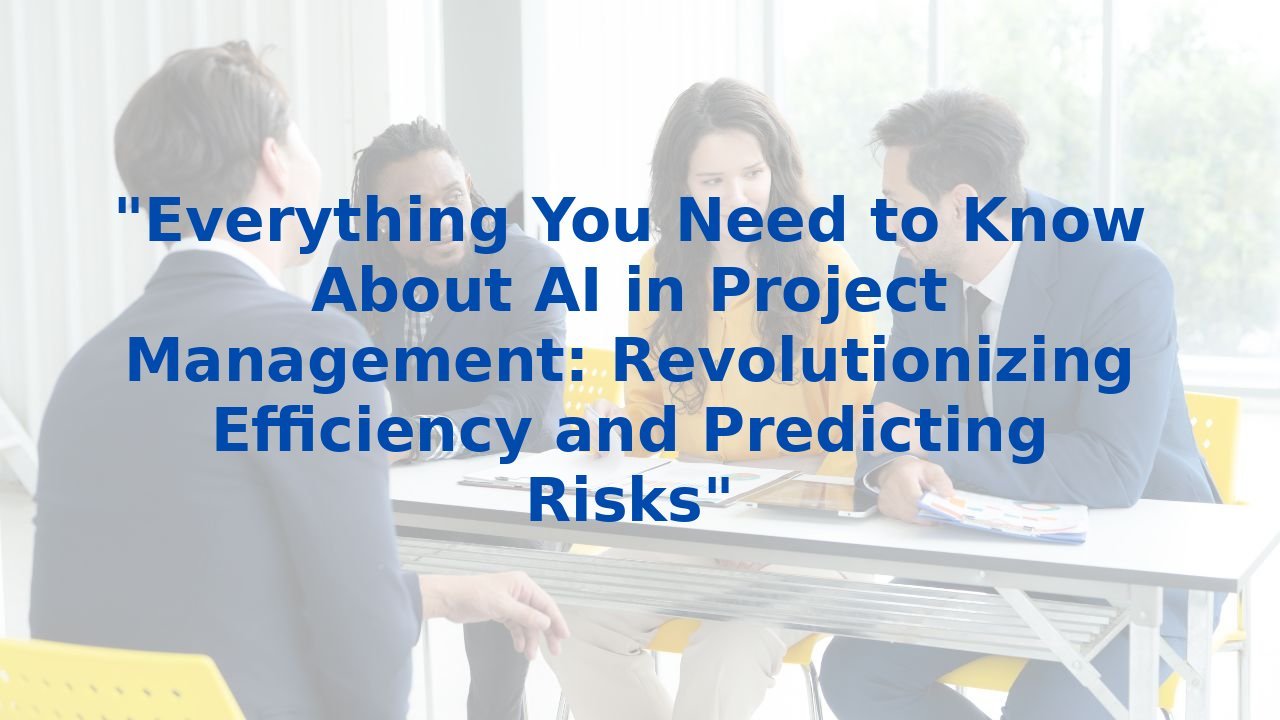Harnessing AI for Business Process Management: A Comprehensive Guide to Transformational Change
The Transformative Role of AI in Business Process Management
Introduction
In a world where speed and agility define success, businesses stand at the crossroads of innovation and efficiency. One of the most groundbreaking advancements enabling organizations to enhance their performance and streamline operations is Artificial Intelligence (AI). Integrating AI into Business Process Management (BPM) is not just a trend; it’s a transformational shift that enables smarter decision-making and superior operational efficiency. This guide will explore how AI enhances various business processes that are crucial to BPM and the compelling benefits it delivers.
Process Discovery: Unveiling Hidden Efficiencies
At the heart of BPM lies process discovery, where AI becomes a powerful ally. Utilizing technologies such as process mining and pattern recognition, AI can sift through mountains of operational data much faster than traditional methods. Instead of relying on time-consuming employee interviews and manual analyses, AI uncovers inefficiencies that might otherwise slip under the radar.
Imagine identifying bottlenecks that stifle productivity without dedicating weeks to manual audits. With AI-driven insights, businesses can get a clear, real-time picture of their operations and take decisive steps towards optimization. It's like shining a spotlight into the corners of your organization, revealing opportunities for improvement.
Process Mapping: Creating a Blueprint for Success
After uncovering inefficiencies, the next logical step is process mapping. This phase serves to visualize workflows and align them with organizational goals. AI tools can generate dynamic process maps that illustrate how different processes interconnect, depicting flows and highlighting areas prone to delays.
These AI-generated maps keep documentation up-to-date, reflecting changes as they occur within the organization. This adaptability not only aids communication across teams but fosters a culture of continuous improvement as process adjustments are clearer and simpler to implement.
Process Automation: The Workhorse of Efficiency
Among the applications of AI in BPM, process automation stands out as the most impactful. Robotic Process Automation (RPA), powered by AI, enables the execution of repetitive, rule-based tasks with remarkable accuracy and efficiency. Tasks that once consumed countless hours by human employees—like data entry and customer service inquiries—can now be automated and executed round-the-clock.
This shift frees your workforce from mundane tasks, empowering them to engage in more strategic, innovative pursuits. By augmenting human capabilities with AI, organizations can harness better overall productivity and engagement levels, creating a win-win scenario.
AI for Process Improvement: The Path Forward
To ensure that business processes remain optimal, continuous improvement is necessary. Here again, AI plays a crucial role. With its ability to analyze data in real-time and provide feedback, AI supports a cycle of ongoing enhancements. Performance insights and data-driven recommendations empower organizations to refine and iteratively optimize their processes.
This commitment to improvement aligns BPM strategies with organizational goals and market dynamics, ensuring that businesses stay competitive and responsive to both internal and external changes.
Benefits of AI in BPM
The benefits of integrating AI into BPM are multifaceted:
- Enhanced Productivity: By automating repetitive tasks, AI allows employees to focus on higher-value activities, which improves overall productivity.
- Improved Decision-Making: AI provides predictive analytics that help decision-makers steer the organization based on concrete data.
- Reduced Errors: Automating manual processes minimizes the risk of human error, ensuring that tasks are completed accurately.
- Real-Time Monitoring: AI enables organizations to keep a finger on the pulse of their operations, swiftly identifying and addressing issues as they arise.
- Data-Driven Insights: Comprehensive data analysis reveals underlying trends, enabling organizations to strategize effectively.
Training Employees for AI: A Crucial Step
While the benefits of AI are undeniable, their realization hinges on one critical factor: employee training. Organizations must invest in robust training programs that equip their workforce with skills to effectively collaborate with AI technologies. This includes:
- Understanding AI Capabilities: Educating employees on AI's capabilities fosters seamless integration into workflows.
- Data Analysis Skills: Enhancing employees’ ability to analyze and interpret data insights empowers them to leverage AI tools effectively.
- Adaptability: Teaching adaptability promotes a culture where employees embrace and swiftly transition to new technologies.
- Collaboration: Fostering a teamwork-first mindset helps in building a synergistic environment between employees and AI systems.
Conclusion
The integration of AI into BPM is not just a technological upgrade; it is a catalyst for cultural and operational transformation within organizations. By enhancing processes such as discovery, mapping, automation, and improvement, businesses can unlock new efficiencies, drive down costs, and stay ahead of their competition. However, for AI's full potential to be realized, a commitment to employee training is equally essential. By investing in people and technology, organizations position themselves for sustained success in an ever-evolving marketplace.



